Server radiators are classified in the following ways:
Classified by heat dissipation method
Air-cooled radiator

· Active Air Cooled Radiator: This radiator comes with a fan. When the server is working, the fan rotates, accelerating the air flow, allowing the cool air to pass through the heatsink to carry away the heat generated by the server components such as the CPU, chipset, etc. For example, many server CPU air-cooled coolers automatically adjust the fan speed based on temperature. When the server is under high load and the component temperature rises, the fan speed is increased to enhance the heat dissipation capacity. Its advantages are relatively high heat dissipation efficiency, low cost and mature technology; The disadvantage is that the fan produces noise and needs to be cleaned up regularly, otherwise the heat dissipation will be affected.
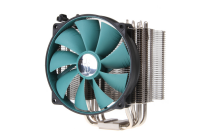
· Passive air-cooled radiator: There is no fan and only relies on natural convection and heat sinks to dissipate heat. It requires a large surface area and good thermal conductivity of the heat sink. It is generally used in server components that require very high noise or have low heat generation. These coolers are typically less efficient at dissipating heat than active air-cooled coolers, but they can be useful in certain environments, such as small data centers that are sensitive to noise or low-power servers.·
Liquid-cooled radiator

· Water-cooled radiator: Takes away heat by circulating a liquid (usually a dedicated coolant) through the cooling pipes. A water cooling system generally consists of a water block, a water pump, a radiator (usually a radiator with fins), and coolant. The water block is in close contact with the heating parts of the server, and after absorbing the heat, the coolant is circulated in the pipe through the water pump, bringing the heat to the radiator, and the fins and fans on the radiator dissipate the heat into the air. The high heat dissipation efficiency of the water cooling radiator can effectively handle the heat dissipation problem of high-power server components. However, it is costly, complex to install and maintain, and carries the risk of coolant leakage.
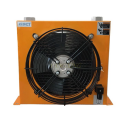
Oil-cooled radiator: Uses oil as the cooling medium. The specific heat capacity of the oil is larger, which can absorb more heat, and the insulation performance of the oil cooling system is good. Some special servers, such as servers working in high-voltage and high-electromagnetic interference environments, or servers that require extremely high heat dissipation stability, will use oil-cooled radiators. But the disadvantage of oil-cooled radiators is that the fluidity of oil is worse than that of water, more power is required to drive the cycle, and the cleaning and replacement of oil is more troublesome.
Classified by installation
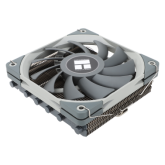
· Push-down heat sink: The heat sink is flat and mounted above the server assembly, dissipating heat by blowing down or by using a heat sink to conduct heat. Ideal for installation in server cases where space is limited, this heatsink provides some level of heat dissipation to multiple components on the motherboard, such as the CPU and peripheral chips. But it may not be as efficient at dissipating heat as tower radiators because of the relatively small amount of space for heat dissipation.
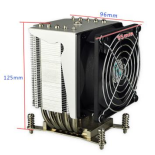
· Tower radiator: The shape is tower-shaped, with more heat dissipation fins. It is usually installed on the main heat-generating components such as the server CPU, and the heat is dissipated by fans on the side or air ducts in the chassis. It has more heat dissipation fins, a large heat dissipation area, and a good heat dissipation effect. However, it will take up a large vertical space, which requires a certain height of the server chassis.
Categorized by the target of the radiator
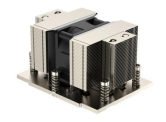
·CPU Cooler: A cooler specifically designed for server CPUs. Due to the high performance, high power consumption, and high heat generation of server CPUs, CPU coolers need to have high heat dissipation efficiency. For example, some high-performance server CPU coolers use heat pipe technology, where the coolant inside the heat pipe is vaporized by heat, and then the heat is quickly transferred to the heat dissipation fins, which are then dissipated by the fan.
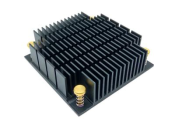
· Chipset Heatsink: Used for heat dissipation of server motherboard chipsets. Although the heating power of the chipset is not as good as that of the CPU, it also needs to be effectively cooled to ensure the stable operation of the server. Such heatsinks are usually designed according to the size and layout of the chipset, with some having small heatsinks and others with small fans.
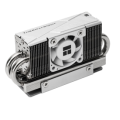
·Hard disk heatsink: Mainly used for heat dissipation of server hard disks. Hard drives generate heat when they are working, and working at high temperatures for a long time may affect the life of the hard drive and data security. A hard drive heatsink is usually installed near the hard drive rack and blows cool air to the hard drive through a fan, or conducts heat out of the hard drive through a heatsink.


